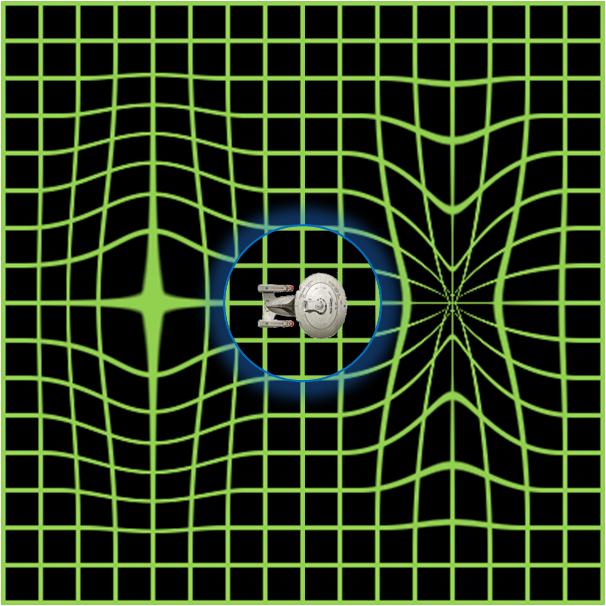That’s right; FTL may be closer than we think. And because I thoroughly enjoy it I’m going to say it – more Star Trek technology is coming to life! (In addition to the tractor beams, universal translators, VISORs and, of course, replicators).
A physicist named Harold White recently made the landmark announcement that he and his team at NASA were beginning work on a faster-than-light warp drive. And he doesn’t say ‘warp drive’ lightly – it works very much like the engines we see in Star Trek.
You see in 1994, a physicist named Miguel Alcubierre published a paper titled, “The Warp Drive: Hyper-Fast Travel Within General Relativity“. In this paper, he showed that it was possible to travel faster than light without violating relativity and without the introduction of wormholes.
How? The mechanics of it involves a localized expansion of spacetime behind the spaceship, and a corresponding contraction in front of it. This creates what Star Trek would call a “warp bubble” around the spaceship, moving spacetime around the ship. Since spacetime can be contracted/expanded as fast as you like, from a frame of reference outside the disturbed region, it would appear that the spaceship was moving faster than light. Of course, within the ship’s frame of reference, it will perceive no acceleration at all, and would not be exceeding the speed of light, thus not violating relativity. To the ship, everything else has moved around it, while to us Earthlings, it’s sped off at warp 9.
The problem with the Alcubierre Drive is that, while it would allow us to travel to Alpha Centauri (which is 4.3 light years away) in a matter of weeks, the contraction and expansion of spacetime to the degree required proves to need amounts of energy that is simply impossible to achieve. The theory was thus discarded as impractical – we’re running out of fuel as it is, how are we expected to power spaceships that require a mass-energy equal to the planet Jupiter?!
However, White has had put a bit of thought into redesigning the Alcubierre drive to renew hope of upgrading Earth from a pre-warp civilisation. He figured out that if you increase the thickness of the negative vacuum energy ring, making it more of a toroid shape rather than a flat belt, and if you oscillate the warp bubble, the energy requirements drop dramatically. His approach saw a reduction of mass-energy requirements to as little at 1600 pounds!
Now that the whole idea of achieving interstellar travel doesn’t seem so impractical, the man is hard at work beginning actual experiments. That’s right – the idea has progressed from theoretical physics into experimental physics and NASA scientists are, at this very moment, testing the theory. They’re trying to simulate the re-designed Alcubierre drive at a very small scale, using lasers to disturb spacetime by one part in 10 million.
White is still cautious about premature hype surrounding the experiment – he’s waiting for the “Chicago Pile” moment. That is a reference to the moment in 1942 when the first ever nuclear reactor was activated in Chicago, generating just half a watt. That’s barely enough to light up a standard bulb. A year later, a reactor that produced approximately 4MW was built and we’ve only built bigger reactors since. That “Chicago Pile” moment is the one where existence is proven. It may be on the tiniest scale, but it’s real, solid and measurable evidence that the theory works. That hasn’t happened yet for warp drive theory, but we are all waiting with bated breath.
Perhaps it will not be long before we can boldly go where no man has gone before.
[Via io9 | Top Image Credit]


